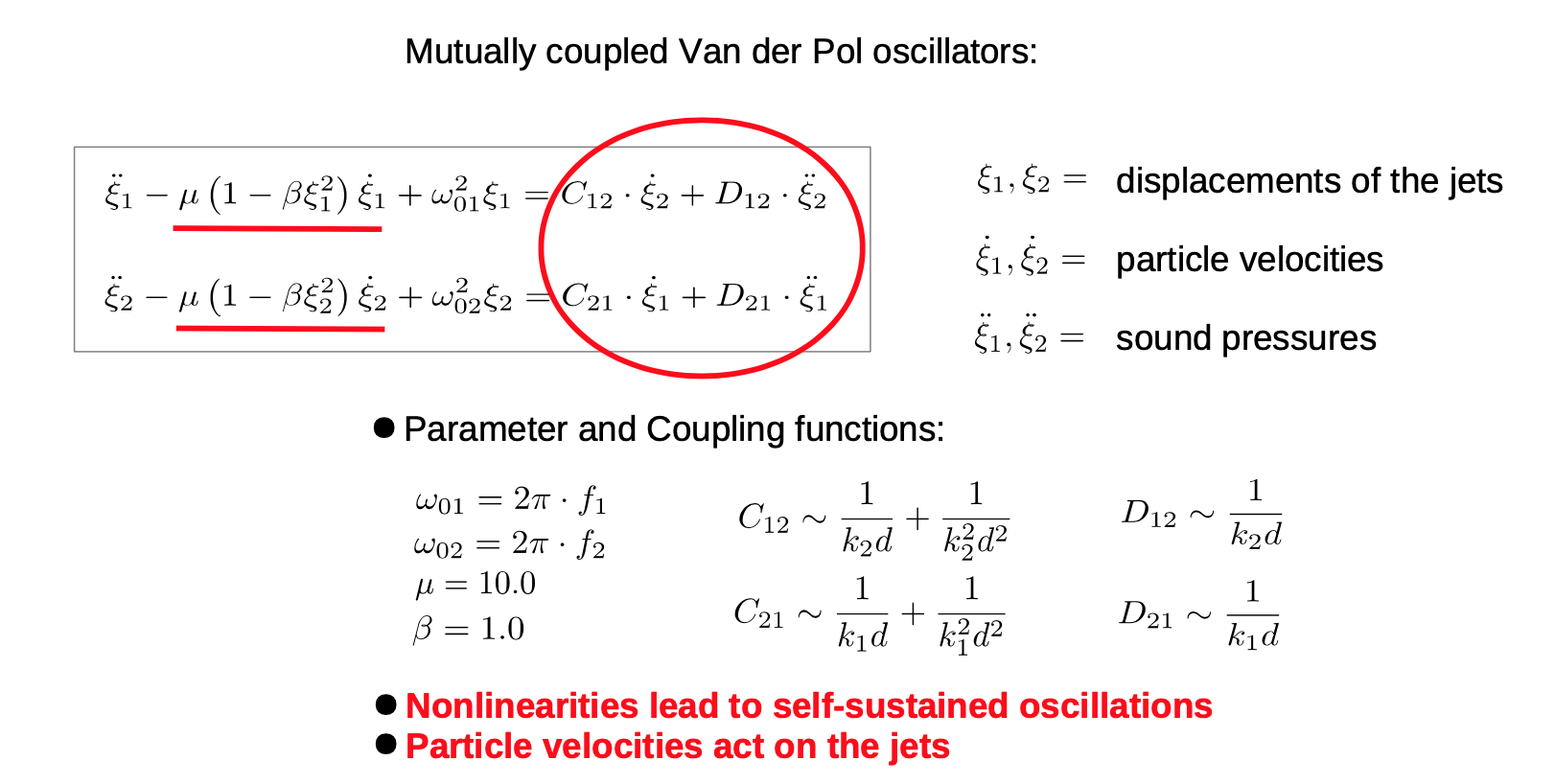Synchronization-of-Organ-Pipes
Acoustic Synchronization of Organ Pipes
Synchronization is a highly nonlinear phenomenon in nature. Examples are the synchronized behavior of an auditorium applauding, neuronal networks or populations that synchronize their dynamics in ecosystems. Synchronization can occur when special oscillating systems - so called self-sustained oscillators - interact to each other or with simpler vibrating systems, so called drivers.
GOLDBERG ANALYTICS helps organ builders to design their instruments under given constraints of construction in concert halls and churches. Experiments show the conditions under which synchronization occurs
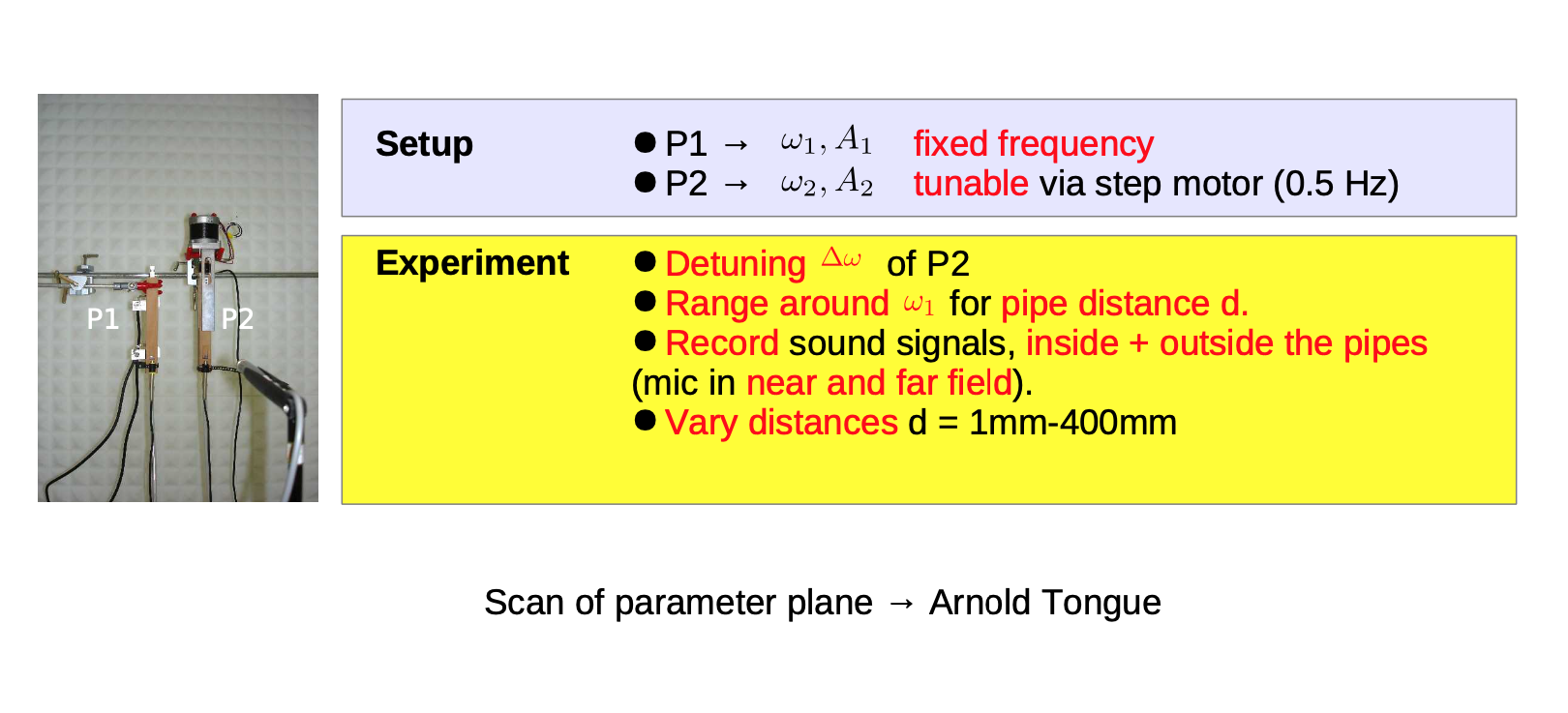
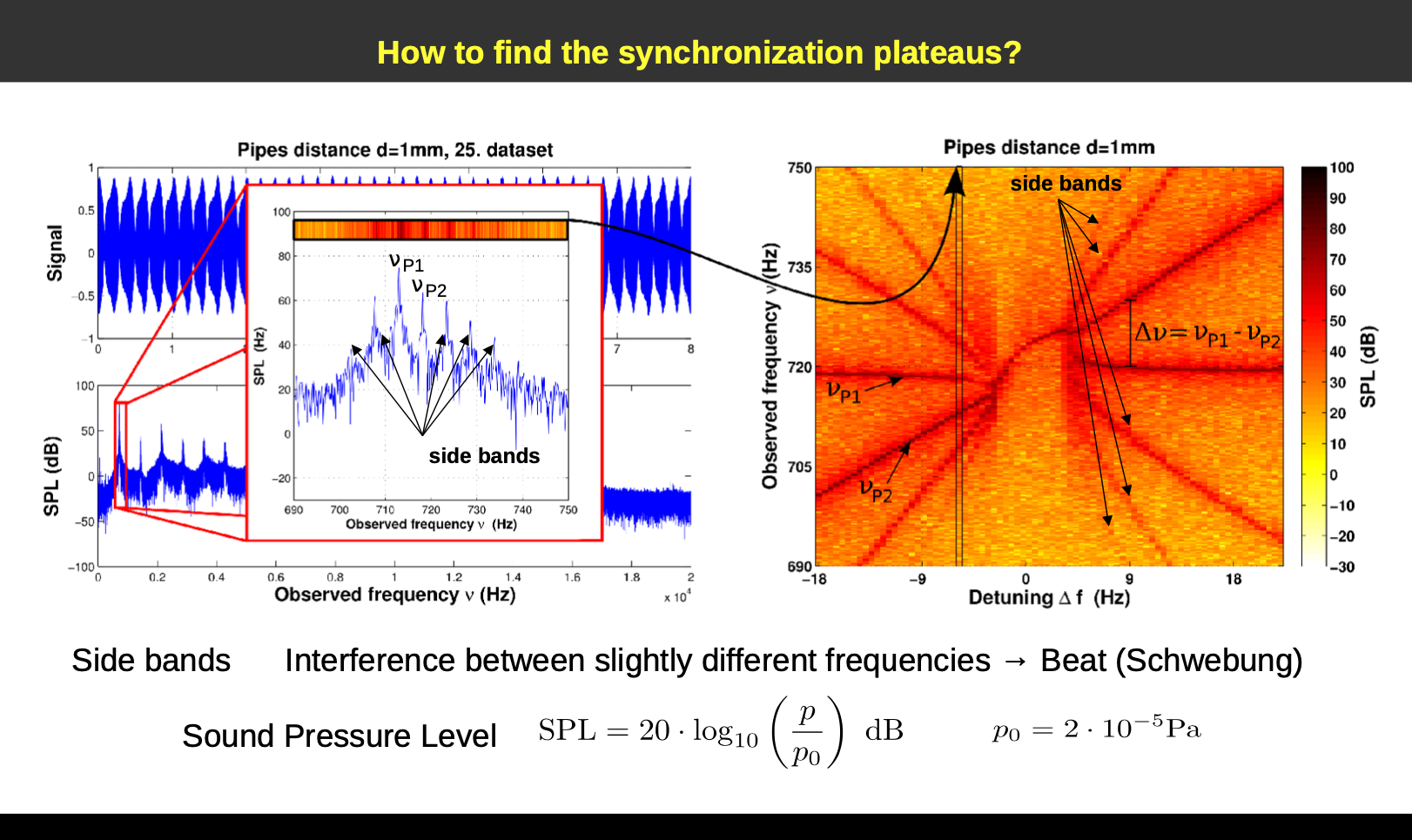
From the experimental data we extract synchronization plateaus in accordance the theory of nonlinear oscillations.
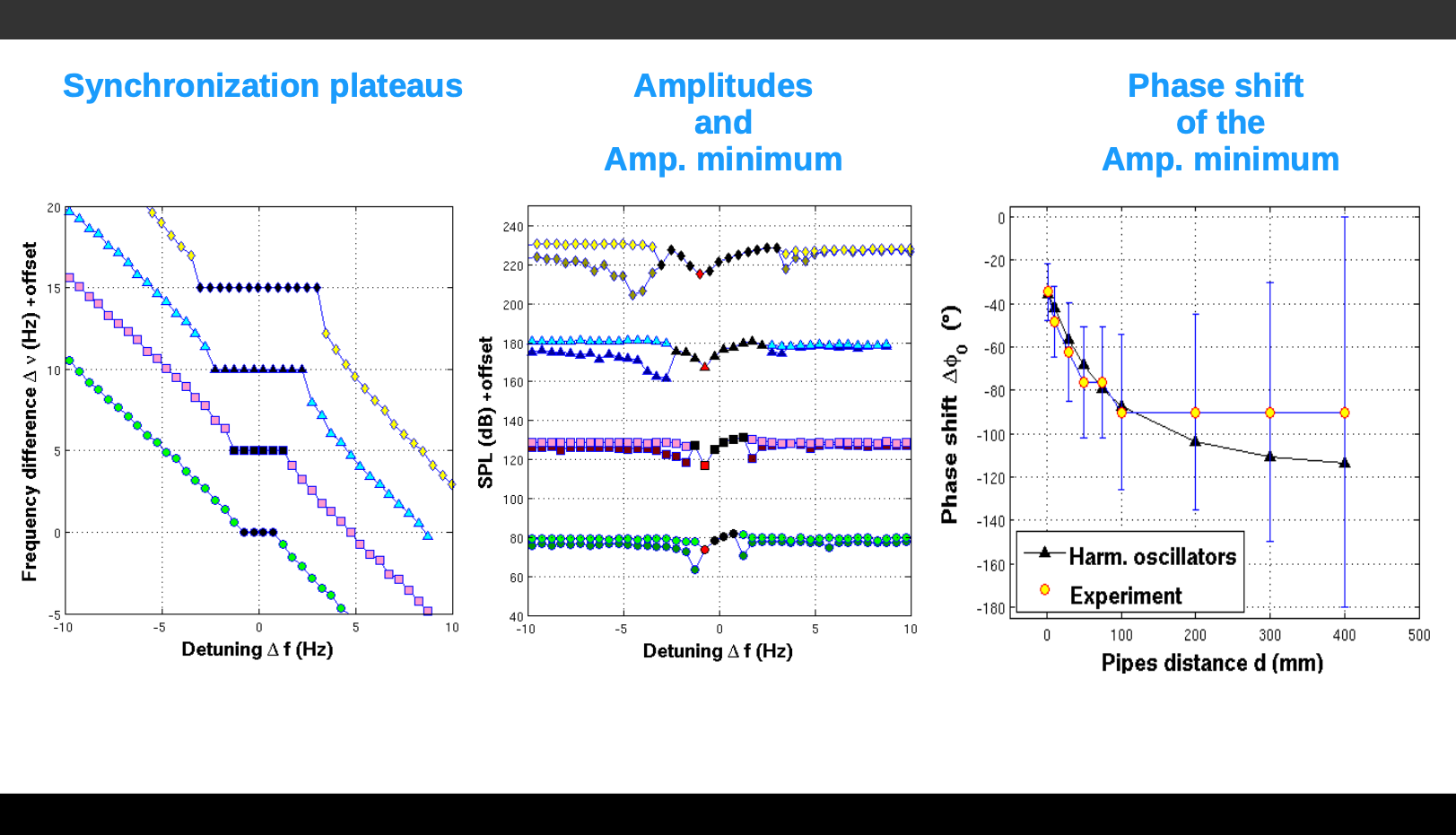
The synchronization plateaus form a structure, called Arnold tongue, which gives informations about the coupling parameters.
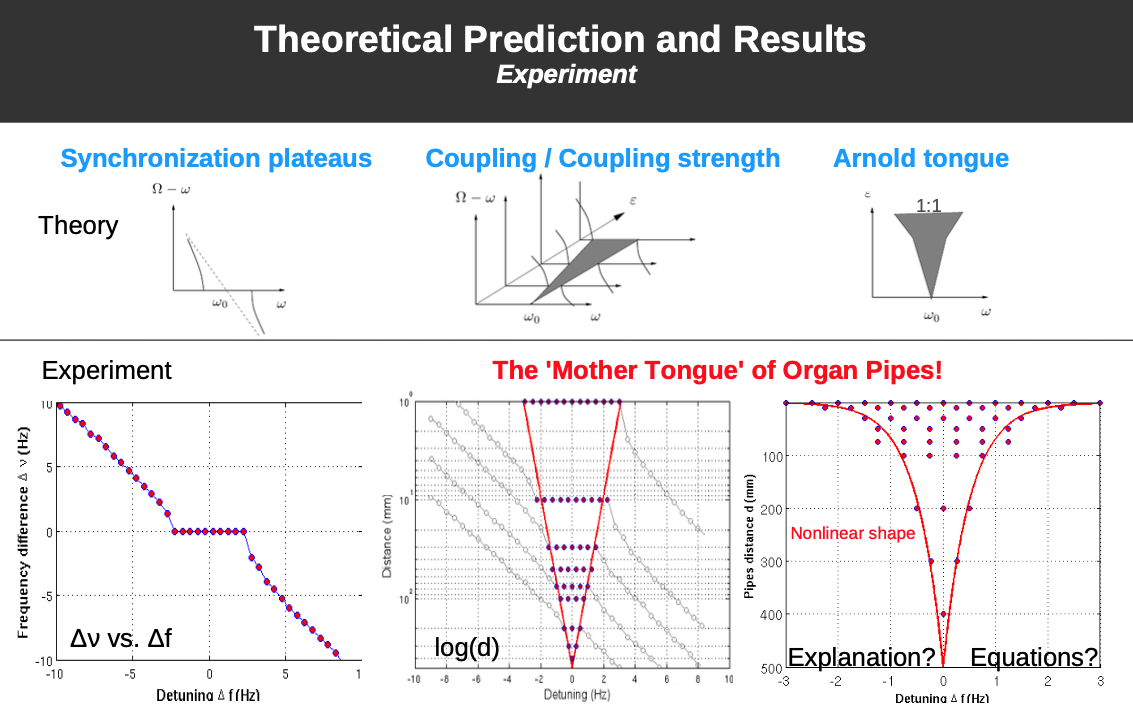
With the coupling parameters one can model the coupling between the instuments.
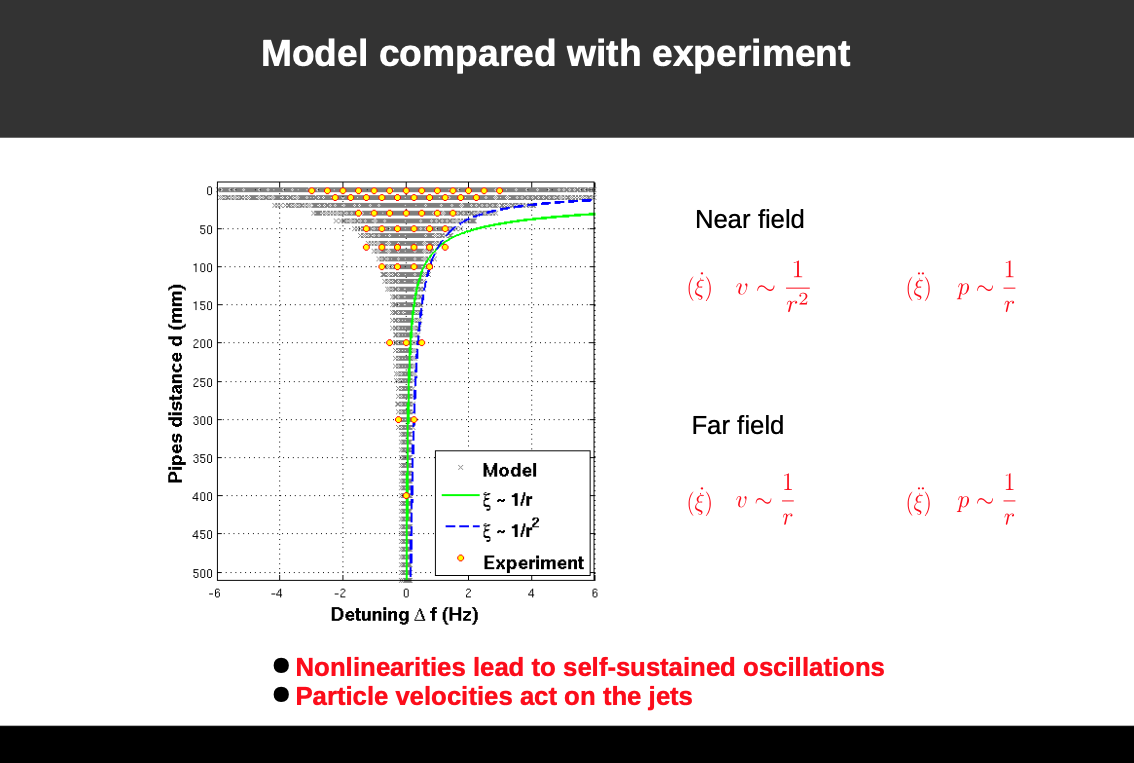
From phase data we reconstruct the oscillator model and the nonlinear coupling function.
